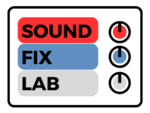When it comes to music production, applying equalization (EQ) to the entire mix can significantly impact the final sound. By carefully sculpting the frequency balance of the overall mix, you can enhance clarity, balance conflicting elements, and achieve a cohesive and professional sound. In this article, we will explore the best practices and techniques for using EQ on the entire mix, providing you with the tools to master the art of mix-wide equalization.
Start with a Balanced Mix
Before diving into EQ adjustments, ensure that your mix is well balanced and free from any major issues. Address any glaring tonal imbalances or conflicting elements through volume fader adjustments, panning, or basic corrective EQ. This sets a solid foundation for applying mix-wide EQ.
Focus on Broad Strokes
When equalizing the entire mix, it’s best to focus on broad strokes rather than making surgical adjustments. Use shelving EQs or gentle high-pass and low-pass filters to shape the overall frequency balance. For instance, a subtle high-shelf boost can add air and brilliance, while a low-shelf cut can reduce muddiness or excessive bass.
Tackle Frequency Masking
Frequency masking occurs when multiple elements in the mix compete for the same frequency range, resulting in a loss of clarity and definition. To address this, identify frequency clashes between instruments and make subtle cuts or adjustments in those areas. For example, if the kick drum and bass guitar are masking each other in the low-end, make slight cuts to either instrument to create separation and clarity.
Enhance the Vital Elements
Identify the key elements in your mix that require emphasis and enhancement. Vocals, lead instruments, or any prominent elements that drive the song should be given special attention. Use subtle boosts in the presence or upper-midrange frequencies to bring these elements forward and ensure they cut through the mix.
Consider the Genre and Style
Different genres and musical styles have their own sonic characteristics. Take into account the sonic signature of the genre you are working on and make EQ adjustments accordingly. For example, in a rock mix, you might want to add a touch of aggressiveness by slightly boosting the upper-mids, while in a jazz mix, a warmer and smoother tonal balance might be desired.
Use Reference Tracks
Reference tracks are invaluable tools for understanding the desired tonal balance and sonic characteristics of a specific genre or style. Compare your mix to professionally mixed and mastered tracks in the same genre, paying attention to the overall frequency balance. Make adjustments to your mix based on what you hear in the reference tracks, while still maintaining your unique artistic vision.
Trust Your Ears
While guidelines and techniques are helpful, the most important aspect of using EQ on the entire mix is to trust your ears. Use critical listening skills and make adjustments based on what you perceive and feel is right for the mix. Take breaks during the process and revisit the mix with fresh ears to ensure objectivity.
Equalizing the entire mix is a crucial step in music production that can elevate your mixes to a professional level. By focusing on broad strokes, addressing frequency masking, enhancing vital elements, considering genre characteristics, and trusting your ears, you can achieve a balanced, clear, and cohesive sound. Remember, there are no strict rules in EQ, and experimentation is key. With practice and a discerning ear, you will master the art of using EQ on the entire mix, resulting in mixes that captivate and engage your listeners.




